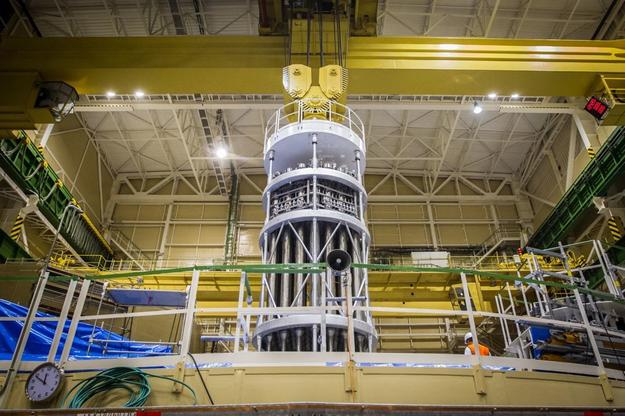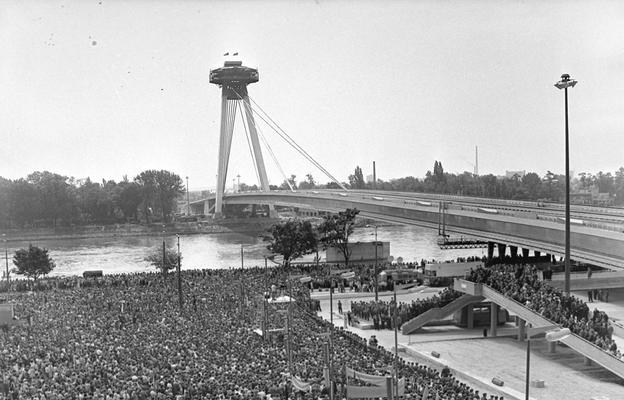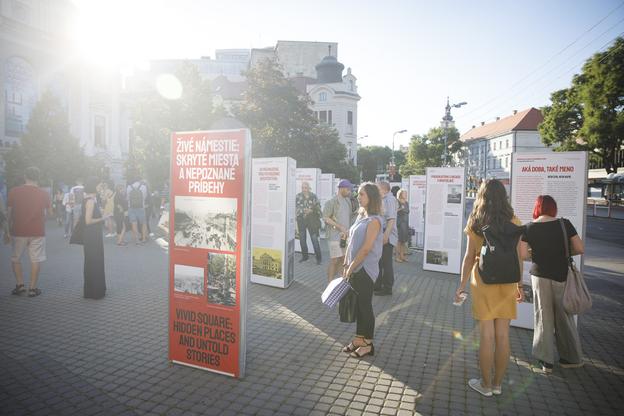Good evening. Here is the Friday, August 26 edition of Today in Slovakia – the main news of the day in less than five minutes.
For weekend events and news on travel and culture in Slovakia, see the latest edition of our Spectacular Slovakia newsletter.
Third unit of Mochovce nuclear power plant gets final approval to load fuel rods and power up
The third reactor unit of the Mochovce nuclear power plant in western Slovakia should finally enter into full operation at the beginning of next year, CEO Branislav Strýček of Slovenské Elektrárne (SE), the plant's operator, confirmed on Thursday, August 25. He was speaking in response to a final decision issued by Slovakia's Nuclear Regulatory Authority (ÚJD) permitting it to go ahead.
Prime Minister Eduard Heger (OĽaNO) pointed out that Slovakia has been waiting a very long time for the launch of the third unit at Mochovce.
“It has come at a rather appropriate time, as we’re currently facing a big energy crisis,” Heger said, adding that nuclear's share of Slovakia's energy mix is now about to swell from 52 percent to 65 percent.
The third unit will finally open more than 10 years later than planned, and at well over twice the projected cost.
Anniversary of the week
The SNP Bridge, whose futuristic UFO restaurant atop its single column has long been one of the landmarks of Bratislava, marks its 50th birthday today. Although the bridge was declared the structure of the century in Slovakia back in 2001, it is difficult to deny the devastating effect that its construction had on the city's historical Old Town and wider urban fabric.
The bridge was put into operation on August 26, 1972, the 28th anniversary of the Slovak National Uprising (SNP), the event after which it was named. But the opening could have ended tragically, historian Vladimír Tomčík recalls.
“After cutting the ribbon, one half of the bridge was reserved for the official delegation of the Communist Party and the government, while thousands of excited people flooded onto its second section,” Tomčík wrote in his regular history column for the Sme daily. “If the frequency of their steps had equalled the frequency of the bridge’s oscillation, it could have started swaying to such an extent that it might have collapsed.”
Such a situation happened in 1850 when the Basse-Chaîne Bridge in France collapsed while a battalion of French soldiers was marching across it, killing over 200 people.
Feature story for today
The complex, bloody and victorious history of Bratislava's central squares
The biggest central space in Bratislava consists of three squares – Kamenné, Velvet Revolution and SNP Squares. It has served as the city’s main marketplace, a target of Napoleon’s shellfire, and the place where Slovaks won their freedom and democracy.
Together, the three squares will soon undergo a complex revitalisation at a cost of €20 million. Before then, Bratislavské Rožky, a civic association dedicated to promoting Bratislava’s history, has prepared an outdoor exhibition, The Vivid Square: Hidden Places and Untold Stories, which reveals the highlights of the space's history.
More stories on Spectator.sk:
VETERANS: The secrets of her grandfather’s suitcase in the attic inspired Marta Majerčík to to take more pride in Slovakia's veterans.
NATURE: Experts have found no evidence of the supposed overpopulation of brown bears in Slovakia.
TOURISM: The village of Oborínin eastern Slovakia is surrounded by dead river branches, sandbanks, swamps and waterlogged meadows, offering visitors the feeling of having stepped onto a movie set.
PHOTOGRAPHY: Dežo Hoffmann, a Slovak-born former war photographer, witnessed the birth of the world's most iconic rock band, the Beatles, firsthand – and helped capture with his camera what became a global phenomenon.
If you like what we are doing and want to support good journalism, buy our online subscription. Thank you!
Picture of the day
The Galandia thermal water park in Galanta, 60 kilometres from Bratislava, will temporarily close as of September 5. Its operators say the park is not able to earn enough money to pay for its operations due to a several-fold increase in electricity prices.
In other news
Slovak Prime Minister Eduard Heger and his Polish counterpart, Mateusz Morawiecki, today officially opened a Polish-Slovak interconnecting gas pipeline earlier in the Polish city of Strachocina. It will enable further diversification of gas supplies and bring Slovakia the opportunity to access the global LNG market. The two premiers stressed the security dimension of the new pipeline, as it will help to significantly reduce the dependence of central European countries on gas supplies from Russia.
President Zuzana Čaputová on Friday received credentials from the new apostolic nuncio (effectively, the Vatican's ambassador), Nicola Girasoli. Girasoli until recently served as the Holy See's representative in Peru. He was tasked with his mission to Slovakia by Pope Francis in July.
Slovakia will mark the 78th anniversary of the Slovak National Uprising (SNP) on Monday, August 29, with a national holiday. This day, along with next Thursday, September 1 – when Slovakia will mark the Day of the Slovak Constitution – are both national holidays, meaning most shops and other retail outlets will be closed.
Nurses have turned down a proposal by the finance and health ministries to raise their wages. A survey of its members by the Slovak Chamber of Nurses and Midwives, found that more than 80 percent of respondents disagreed with the proposal.
The long-term sustainability of Slovakia's public finances has been deteriorating over the last two years, meaning that the EU-supported recovery plan and the introduction earlier this year of spending limits are necessary, the Council for Budget Responsibility (RRZ) writes in its Report on the Evaluation of the Implementation of the Rules of Budget Responsibility and the Rules of Budget Transparency for the year 2021.
Slovaks individually imported 30,546 used cars during the first half of 2022. While the portion of used cars among total cars, including new ones, did not change compared to the first half of 2021, the average age of cars on the road increased. Duing the first half of 2021, more than 60 percent of all individually imported cars were more than five years old, while in the same period of this year this share was almost 67 percent, said Ján Pribula, the Secretary General of the Automotive Industry Association of the Slovak Republic, as quoted by the SITA newswire.
If you have suggestions on how this news overview can be improved, you can reach us at editorial@spectator.sk.



 (source: SME.sk / Hej,ty)
(source: SME.sk / Hej,ty)
 The reactor assembly of the third unit at the Mochovce nuclear power plant, pictured in June 2016. (source: SME)
The reactor assembly of the third unit at the Mochovce nuclear power plant, pictured in June 2016. (source: SME)
 Bratislava's SNP Bridge, pictured in the early seventies. (source: TASR)
Bratislava's SNP Bridge, pictured in the early seventies. (source: TASR)
 Vivid Squae: Hidden places and Untold Stories exhibition (source: Courtesy of Bratislavské Rožky)
Vivid Squae: Hidden places and Untold Stories exhibition (source: Courtesy of Bratislavské Rožky)
 Galandia will close as of September 5. (source: TASR)
Galandia will close as of September 5. (source: TASR)